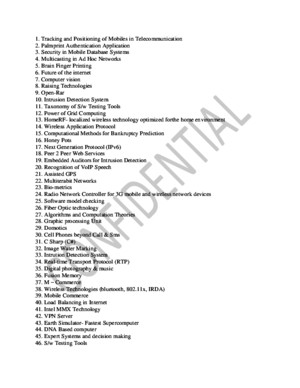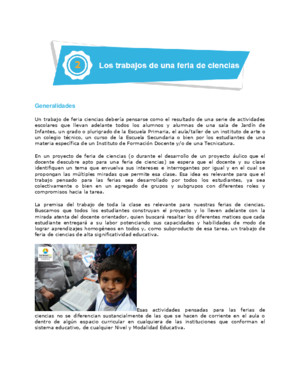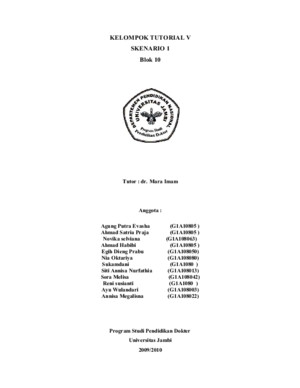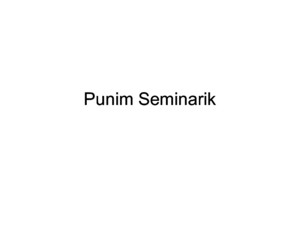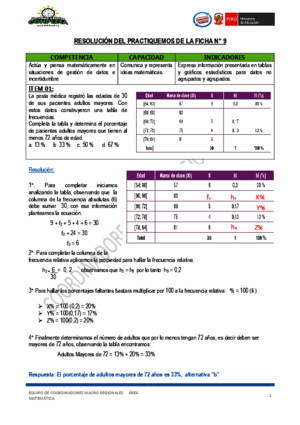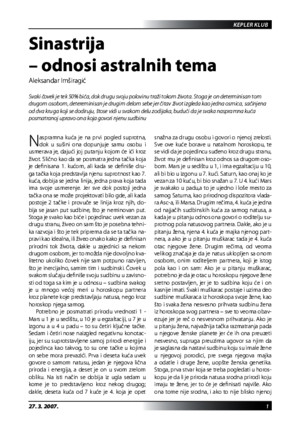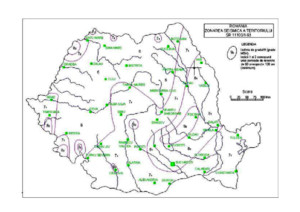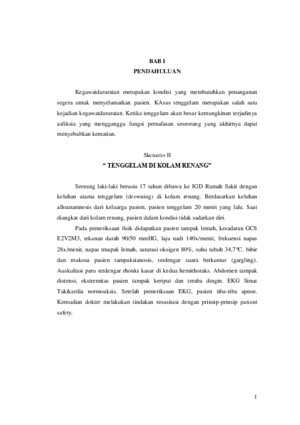Seminar Topic 2
There is document - Seminar Topic 2 available here for reading and downloading. Use the download button below or simple online reader.
The file extension - PDF and ranks to the Documents category.
Tags
Related
Comments
Log in to leave a message!
Description
Download Seminar Topic 2
Transcripts
Thermal barrier coatings technology: criticalreview, progress update, remaining challenges and prospects R Darolia * A comprehensive and integrated review of thermal barrier coatings (TBCs) applied to turbinecomponents is provided Materials systems, processes, applications, durability issues, technicalapproaches and progress for improved TBC, and our understanding of the science andtechnology are discussed Thermal barrier coating prime reliance and further advances havebeen hampered by TBC loss by particle impact and erosion in certain locations of the turbineblades Accumulation of low melting eutectic containing calcia, magnesia, alumina and silicaresulting in TBC spallation limits maximum surface temperature Design methodologies toaddress durability and data scatter issues are discussed Compositions, morphology,characteristics and performance data for new bonds to achieve longer TBC life are describedFurther reduction in the thermal conductivity of the top layer to minimise the parasitic mass of thecoating on the component is being sought via top layer composition and processingmodifications as well as by alternate ceramic compositions The progress in these areas iscritically reviewed including processing, stability and durability limitations The paper alsodescribes effort to understand various failure mechanisms including modelling and simulation Keywords: Thermal barrier coatings, Bond coat, Yttria stabilised zirconia, Low thermal conductivity, EB-PVD, CMAS, Erosion, Impact, Designmethodology Introduction Application of thermal barrier coatings (TBCs) oncooled turbine engine components such as combustors,high pressure turbine (HPT) blades and HPT nozzles isincreasing in commercial and military jet engines Thistrend will certainly continue because the insulatingcapability of TBC enables higher operating temperaturesand/or permits a reduction in the required amount of cooling air, thereby improving efficiency, reducingemission and increasing thrust/weight ratio Powergeneration turbine engines are also increasingly usingTBC Thermal barrier coatings are also slated to be usedon components made out of ceramic–matrix composites(CMCs)A schematic of a TBC system on an HPT blade isshown in Fig 1 Thermal barrier coatings are currentlyused to provide metal temperature reductions of up to y 100 u C (Fig 1 b ), while potential benefits are estimatedto be greater than y 200 u C Factors that determinetemperature reductions include part geometry andlocation, heat flux, heat transfer coefficients, backsidecooling air, TBC thickness and thermal conductivityThe temperature benefits are highly significant andsurpass other material technologies advances includingsingle crystal Ni based superalloys (Fig 2) achievedover a 30 year period The initial applications weredriven by the need to suppress component degradationdue to excessive surface temperatures in combustors andsome selected turbine aerofoils experiencing oxidationdamage In spite of significant improvements, TBCs areyet considered ‘prime reliant’ because of local spalls andreduction in thickness, and full utilisation has eludedturbine designers Research and technology develop-ments have been carried out for the last two decades toaddress performance and reliability while extensiveresearch is being carried out for higher temperatureapplications beyond the baseline system, and for TBCwith lower thermal conductivityThermal barrier coatings are complex, multilayeredand multimaterial systems with many variants related tocomposition, processing and microstructure There areover 400 publications on this subject This review paperwill describe the currently used TBC materials systemsand summarise our current understanding of the science,technology and failure mechanisms Emphasis will beplaced on engineering application aspects to draw onthe author’s vast experience directing TBC research ata major aerospace company in collaboration with manyuniversities and national laboratories References select-ed based on relevance and scientific value are providedRecent review papers 1–10 capture various aspects of the * Corresponding author, email ramdaroliagmailcom(Retired) GE Aviation, 7377 Overland Park Court, West Chester, OH45069, USA 2013 Institute of Materials, Minerals and Mining and ASM InternationalPublished by Maney for the Institute and ASM InternationalDOI 101179/1743280413Y0000000019 International Materials Reviews 2013 VOL 58 NO 6 315 TBC technology and provide excellent additional back-ground The author has also relied heavily for insight forhis research on papers in five conference proceedings‘Science and technology of zirconia, Volumes I–V’ 11–13 that are excellent sources for fundamental informationon sintered or hot pressed ‘bulk’ zirconia based ma-terials The author has found that the properties andbehaviour in the coating form are quite similar to thoseof the bulk materials Thermal barrier coating application Thermal barrier coatings are applied to componentswhich are internally cooled by directing air thoughchannels Designs with TBC coated parts consider partconfiguration and thickness, heat flux, heat transfercoefficients, combustion and turbine inlet temperaturesand total cooling air allowed by the system engineers Tominimise adding excessive mass and cooling holeclosure, thinner coatings are preferredMain components in propulsion turbine engines whereTBC is applied are shown in Fig 3 The combustor linerswere the first components to routinely use TBC appliedby an air plasma spray (APS) process Thermal barriercoatings on aeroturbine blades are applied by an electronbeam physical vapour deposition (EB-PVD) process Thelarger components of the power generation turbines(combustor, several stages of nozzles and blades, referr-ed to as buckets) predominantly use the APS processbecause of their larger size Thermal barrier coatingthickness on aerorotating parts is typically 100–250 m mcompared to 250–500 m m on the stationary componentssuch as shrouds, nozzles and combustor parts In theseparts, both EB-PVD and APS processes are consider-ed The rationale for the process choices will be describ-ed in the section on ‘Processing methods for top coat’Component designs with TBC have evolved from simplyapplying a thin layer of TBC on existing components tosophisticated design practices based on laboratorytest data and observations from the field returned 2 Turbine temperature advancement with TBC comparedwith Ni based superalloys1 a An HPT blade coated with TBC TBC components (bond coat and top coat) are shown with temperature drop thoughthe thickness of TBC b An example of temperature drop in an HPT by TBC application Darolia Thermal barrier coatings technology 316 International Materials Reviews 2013 VOL 58 NO 6 hardware It is also planned to use TBC on componentsmade out of CMCs Constituents of TBC system Thermal barrier coatings are primarily a two layersystem consisting of a porous (porosities generally in therange of 10–25%) ceramic top coat layer comprisingzirconia (ZrO 2 ) ‘partially stabilised’ with about 6–8wt-% ( y 3 ? 4 to 4 ? 5 mol-%) yttria (Y 2 O 3 ) generallyreferred to as 7YSZ or YSZ, and an alumina formingbond coat layer, primarily of NiCoCrAlY or NiAlPtbased compositions Expanded views of an EB-PVDTBC microstructure can be seen in Fig 4 a and b Thereare four main components with unique functions thatinfluence TBC life as shown in Fig 5:(i) top coat layer: provides thermal insulation(ii) thermally grown oxide (TGO) layer: providesbonding of TBC to bond coat and slowssubsequent oxidation(iii) bond coat layer: contains the source of elementsto create TGO in oxidising environment andprovides oxidation protection(iv) superalloy substrate: carries mechanical loadEach of these components has markedly differentphysical, thermal and mechanical properties that arestrongly affected by processing conditions Duringfabrication and most notably during use, these compo-nents interact chemically and mechanically Dynamicrelationships between these layers control the durabilityof TBC It must be pointed out that the compositionand the microstructures of these layers are continuallychanging during service Properties measured in the asfabricated condition could lead to misleading con-clusions Interfaces between the layers also play asignificant role An additional layer, about 0 ? 05–0 ? 1 m mthick, referred to as ‘mixed zone’ (Fig 6), 14 formsbetween the TGO and YSZ lop layer during preheatingand top layer deposition by the EB-PVD process Thislayer consists of zirconia and yttria particles dispersedin the TGO matrix 14 It is likely that this layerinfluences TGO/TBC adhesion, though further studiesare warranted Yttria stabilised zirconia top coat Yttria stabilised zirconia has high melting point (not of much significance to current usage), low thermalconductivity, high oxygen permeability and relativelyhigh coefficient of thermal expansion compared to otheroxides and the 6–8 wt-%Y 2 O 3 composition is relativelystable during high temperature exposure An importantattribute of YSZ for turbine design is that thermalconductivity is essentially temperature invariant Anotherimportant attribute of YSZ is that ZrO 2 and Y 2 O 3 havesimilar vapour pressures allowing deposition of YSZ with 3 Examples of TBC application in propulsion engines Combustor liners, HPT blades and vanes are coated with TBC Darolia Thermal barrier coatings technology International Materials Reviews 2013 VOL 58 NO 6 317
Recommended

